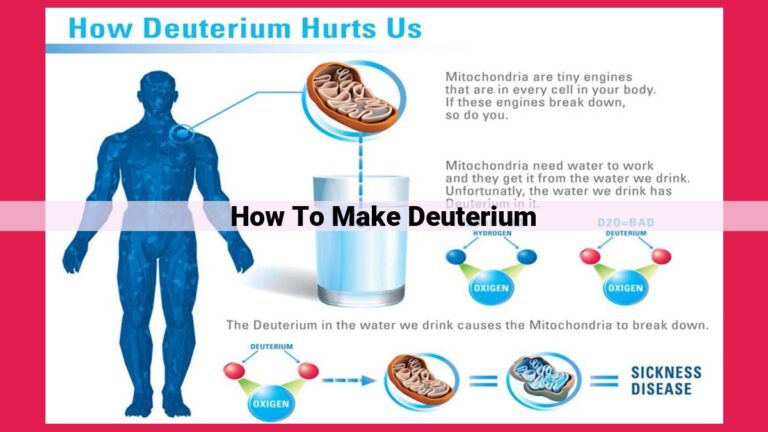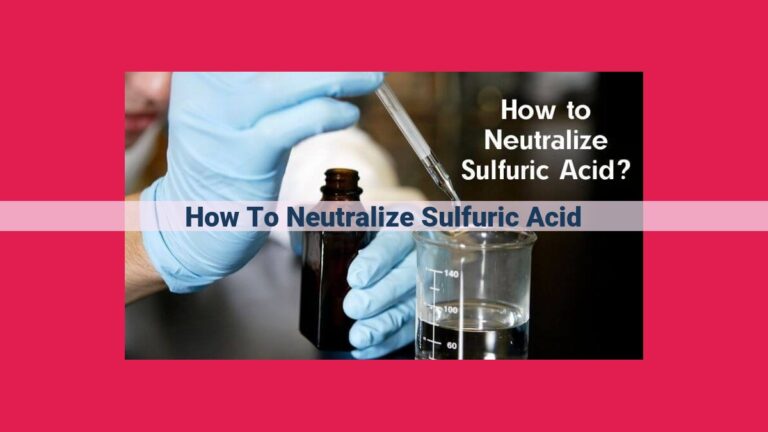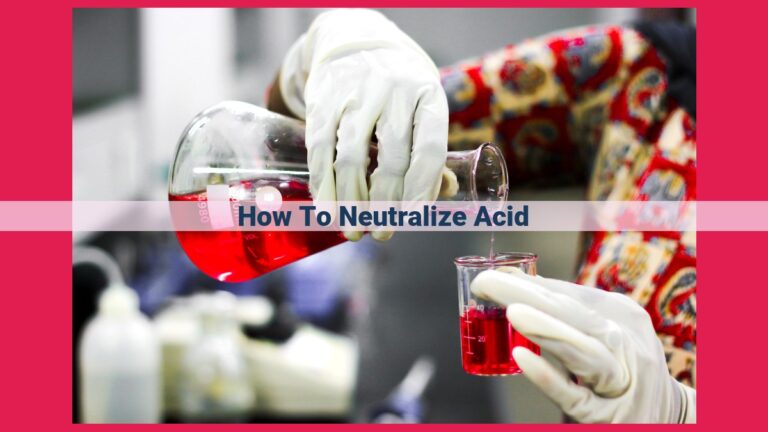Effective Hand Lathering: A Key Weapon In Infection Prevention

Thoroughly lathering hands is crucial for infection prevention. To effectively remove microorganisms and reduce microbial load, it is recommended to lather hands with soap for at least 20 seconds. Extended lathering enhances soap’s antimicrobial effect by capturing and neutralizing microorganisms. Proper lathering techniques contribute to breaking the chain of infection transmission and minimizing the risk of surgical site infections.
The Importance of Lathering Time for Infection Prevention: A Comprehensive Guide
Hand hygiene is an essential pillar in the fight against infections. One crucial aspect of hand hygiene is the proper lathering of soap, which plays a pivotal role in preventing the spread of harmful microorganisms. This article will delve into the recommended lathering time and its significance in infection prevention.
Recommended Lathering Time
The recommended lathering time for effective infection prevention is at least 20 seconds. This extended lathering period allows soap to work its magic by:
- Enhancing its antimicrobial effect: Soap surfactants capture and neutralize microorganisms, disrupting their cell membranes.
- Removing microorganisms: The lather helps detach microorganisms from the hands, allowing them to be rinsed away.
- Reducing microbial load: Thorough lathering reduces the number of microorganisms on the hands, significantly decreasing the risk of infection transmission.
Why Lathering Time Matters
The antimicrobial properties of soap are not fully realized without proper lathering. Extending lathering time allows soap to interact with microorganisms for an extended period, enhancing its ability to neutralize and remove them.
Furthermore, lathering helps create friction, which breaks apart the bonds between microorganisms and the skin surface. This detachment process facilitates the removal of microorganisms, reducing the risk of infection transmission.
Proper lathering time is crucial for effective infection prevention. By understanding the recommended lathering time and its importance, we can enhance our hand hygiene practices and protect ourselves and others from the spread of harmful microorganisms. Remember, the simple act of lathering our hands for at least 20 seconds can make a significant difference in preventing infections.
Antimicrobial Effect of Lathering for Infection Prevention
It’s an everyday act, but lathering up with soap plays a crucial role in maintaining our health and preventing the spread of infection. This frothy solution isn’t just a pleasant way to clean our hands; it’s a weapon against germs.
Unveiling the Power of Lather
As you work the soap into a rich lather, you’re not just creating bubbles. You’re activating a powerful cleaning agent that encapsulates and neutralizes microorganisms. Soap’s surfactants, the molecules that lift dirt off your skin, have a special affinity for microorganisms. They attach themselves to the microbes’ membranes, disrupting their structure and rendering them harmless.
Breaking the Chain of Infection
By thoroughly lathering your hands, you’re removing microorganisms and reducing microbial load. This is especially important in healthcare settings, where hands are a major vehicle for the spread of infection. Proper lathering is a critical step in surgical hand disinfection, as it minimizes the risk of infection at surgical sites.
A Vital Component of Hand Hygiene
Lathering is a key element of effective hand hygiene protocols. By following the recommended lathering time of at least 20 seconds, you give the soap enough time to work its magic and kill germs. This simple yet powerful practice can help prevent the spread of diseases like the common cold, flu, and even more serious infections like MRSA.
In conclusion, lathering with soap is not simply a matter of getting your hands clean. It’s a science-backed strategy for reducing the spread of infection. By understanding the antimicrobial effect of lathering, we can all play a role in protecting our health and keeping our communities healthy.
Unveiling the Importance of Lathering for Effective Microorganism Removal
When it comes to infection prevention, the humble act of lathering has a profound impact. Lathering is the process of creating a foamy mixture of soap and water, and it plays a crucial role in detaching microorganisms from the hands, reducing microbial load, and ultimately breaking the chain of infection transmission.
How Lathering Detaches Microorganisms
As you lather your hands, soap’s surfactants go to work. These tiny molecules act like tiny magnets, attracting and capturing microorganisms from the skin’s surface. The physical action of lathering helps these surfactants penetrate the microorganisms’ protective barriers and break them down.
The Importance of Lathering in Hand Hygiene
Proper lathering techniques are essential for effective hand hygiene. By lathering thoroughly, you increase the contact time between the soap and the microorganisms, allowing the surfactants to work their magic. This results in a significant reduction in the number of microorganisms on the hands, reducing the risk of infection transmission.
Lathering: A Crucial Step in Infection Prevention
From surgical hand disinfection to everyday hand washing, lathering is a critical step in preventing the spread of infection. By dedicating time to lathering, you’re not only protecting yourself but also those around you.
Tips for Proper Lathering
To ensure effective lathering, follow these simple steps:
- Wet your hands thoroughly with warm water.
- Dispense an ample amount of soap into your palm.
- Rub your hands together vigorously for at least 20 seconds, creating a rich lather.
- Ensure you cover all surfaces of your hands, including the fingertips, thumbs, and between the fingers.
- Rinse your hands thoroughly with clean water and pat them dry using a clean towel.
The Power of Lathering: Reducing Microbial Load for Infection Prevention
When it comes to preventing infections, hand hygiene takes center stage. Lathering up with soap and water is a crucial step in effectively removing microorganisms and reducing the risk of infection. The recommended lathering time of 20 seconds ensures that the soap has ample time to work its magic, neutralizing microorganisms and detaching them from the hands.
Lathering Enhances Soap’s Antimicrobial Effect
Soap contains surfactants, which are molecules that capture and neutralize microorganisms. When you lather up, these surfactants spread evenly over your hands, coming into contact with more microorganisms. This extended exposure allows the soap to penetrate the microorganisms’ cells and disrupt their structure, killing them or inactivating them.
Lathering Removes Microorganisms
The friction created by rubbing your hands together while lathering helps to detach microorganisms from the skin’s surface. The soap molecules then surround and trap these microorganisms, keeping them from re-attaching to your hands. This process reduces the microbial load on your hands, significantly lowering the risk of transmitting infections.
Lathering for Surgical Hand Disinfection
In surgical settings, lathering is of paramount importance. Surgical hand disinfection involves a thorough lathering process that minimizes the risk of surgical site infections. The extended lathering time ensures that the microorganisms are completely removed and that the hands are free of contaminants. This is critical for preventing the spread of infections during surgery, where even a small number of microorganisms can lead to serious complications.
By reducing microbial load, lathering effectively breaks the chain of infection transmission. It removes microorganisms from our hands, preventing them from spreading to surfaces, objects, and other people. Proper lathering techniques are essential for maximizing the effectiveness of hand hygiene and ensuring our health and safety.
Lathering Time for Infection Prevention: A Crucial Step for Optimal Hand Hygiene
Ensuring proper lathering time is essential for maximizing the effectiveness of hand hygiene, a cornerstone of infection prevention. Soap surfactants, when activated by lathering, entrap and neutralize microorganisms, detaching them from the hands. This reduction in microbial load significantly lowers the risk of infection transmission.
Surgical hand disinfection, a critical procedure in preventing surgical site infections, also relies on thorough lathering. The extended lathering time allows for the complete neutralization of microorganisms, minimizing the chances of bacterial contamination during surgery.
Public health guidelines emphasize the importance of proper hand hygiene techniques, including adequate lathering time. This is particularly crucial in healthcare settings, food handling, and other environments where infection control is paramount. By dedicating sufficient time to lathering, we create a safeguard against the spread of harmful microorganisms and promote optimal health outcomes.





